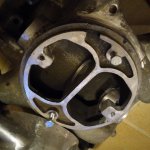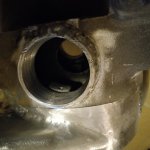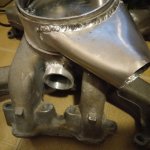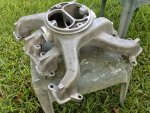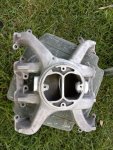One crucial part of the variable nozzle turbo system is turbo control. These CKOs are Garrett generation 2 designs which means vacuum actuated vanes. Vacuum signal is controlled by a 120 Hz pulse width modulated valve, vacuum increases with increasing duty cycle.
Since I don't have to worry about EGR, MAF or NOx limits, sole boost variables are throttle position and boost. For throttle position, I have a stock GM TPS 10137417 which is for a DB2 pump and 4L80E. 0 to 5 volt signal with Vmax at wide open. For boost pressure, I have a 2.5 Bar absolute 0-5 volt sensor. I plan on running this in reverse with 0 volts at 2.5 Bar ( 21.5 PSI gauge).
So with these two inputs, I can use a simple op amp PWM circuit to drive the vacuum control. At low throttle, there is no need for boost so the low voltage from the TPS creates a low duty cycle in the PWM circuit. Open the throttle, TPS voltage goes to 5 and duty cycle of PWM goes to 99%. Vacuum increases, closing vanes and spooling turbines. Manifold pressure increases dropping MAP voltage to the desired set point at 10 PSI. This all has to be bench tested and field adjusted.

Basically, vanes will be closed (more boost) by increasing TPS voltage. To open vanes (reduce boost), a negative voltage from MAP sensor will be summed with TPS voltage. How? Stock 24 volt system is very helpful here. With isolated ground for this control system. Using the back battery negative for the ground of the boost control network, front battery voltage is now a negative 12 volts.
